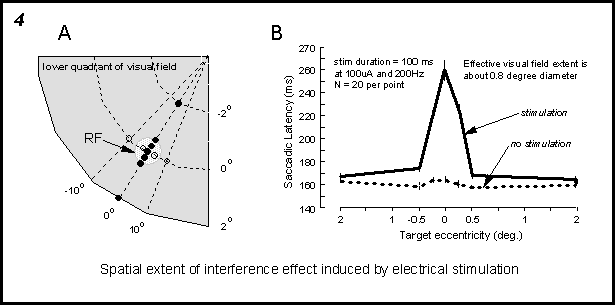Visual Prosthesis
D. The effectiveness of electrical stimulation
(c) Electrical stimulation can produce interference effects.
This becomes evident when monkeys are trained to make a saccadic eye movement to a visual target and the neurons in whose receptive fields the target is placed are electrically stimulated. Figure 4A and 4B demonstrate this. In this case the visual stimulus is presented at various nearby locations relative to the receptive field of the neurons electrically stimulated. Figure 4B shows saccadic latency data for this. When the visual stimulus is placed into the center of the receptive fields of the neurons stimulated there is a dramatic increase in the latency with which the monkey can initiate his saccade to the target. This effect falls off rapidly as the target is moved to more eccentric points in the visual field. Thus it appears that the effects of electrical stimulation in V1 are quite local. The interference effect when visual targets are presented concurrently with electrical stimulation is most prominent in the upper layers of area V1. When electrical stimulation is delivered during the fixation period before target onset (as was done for Figure 4B) the best interference effect occurs in the deepest layers of V1.
